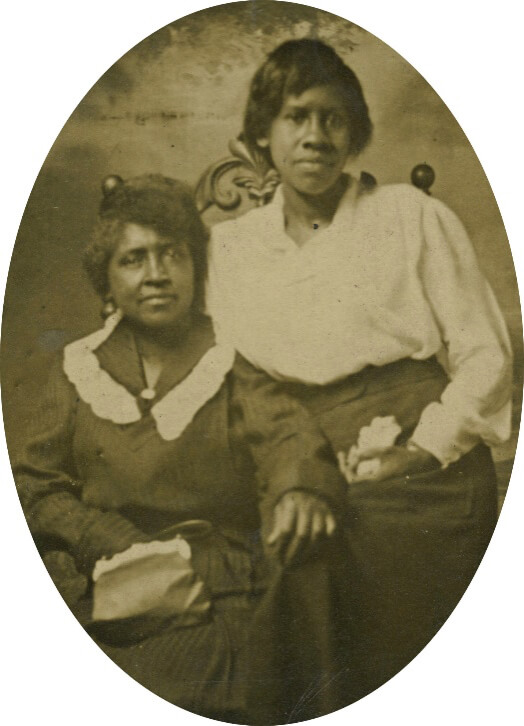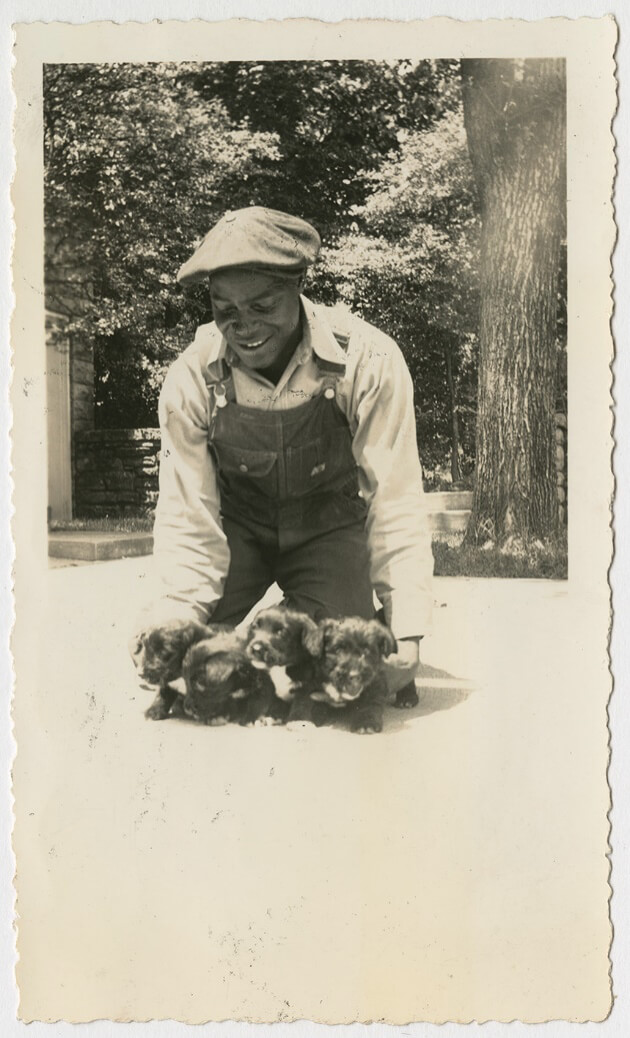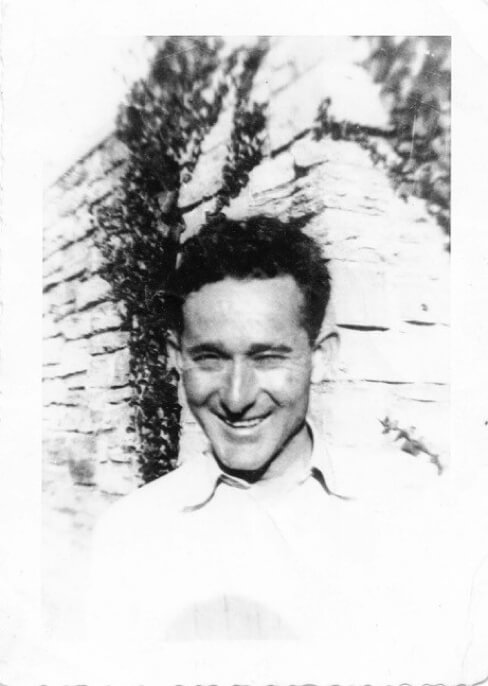Cheekwood was the home and estate of Leslie Cheek, Sr. and Mabel Wood during their later years. The name of the estate is derived from the combination of Leslie and Mabel’s respective surnames prior to their marriage — Cheek and Wood. The two met on a train in 1895 and were wed in October of the following year in Clarksville, Tennessee [Image 1 – Mabel and Leslie Wedding]. In the early years of their marriage, Leslie Cheek Sr. worked for his father’s company, C.T. Cheek & Sons, a wholesale grocery distributor prominent in the Southeast, as a salesman and, later, as a partner in 1897. While Leslie worked, Mable often traveled across the US.
In the early twentieth century, the Cheeks had two children — Leslie Jr. in 1908, and Huldah in 1915. During the same year as Huldah’s birth, Leslie Sr. became President of C.T. Cheek & Sons, after the death of his father. With Leslie Sr.’s growing role in the company, the Cheek family was able to travel outside of the country and send their children to prominent private schools.
Leslie Sr. also invested in the Cheek-Neal Coffee Company, owned by his father’s cousin and creator of the Maxwell House Coffee Blend, Joel Cheek. The popularity of the brand is often linked to President Theodore Roosevelt, who exclaimed that it was “good to the last drop!” [Image 2 – Maxwell House Coffee Ad] The success of the company then caught the attention of the Postum Company, which purchased the Cheek-Neal Coffee Company in 1928.
Through his investments, the sale of the Cheek-Neal Coffee Company left Leslie Sr. with considerable funds — this, in part, enabled the construction of Cheekwood. Approximately 100 acres of land bordering Percy Warner Park were purchased, with design and construction beginning in 1929. [Image 3 – Construction Spring 1930]
The Cheeks chose Bryant Fleming, predominantly a landscape architect, to design the house, outbuildings, and grounds. Fleming built his reputation through his work in Ithaca, New York, Detroit, Michigan, and Nashville, Tennessee. He also was an acclaimed professor and former head of the Department of Landscape Architecture at Cornell University.
The design for Cheekwood was influenced by the Cheek’s and Fleming’s trip to England in 1929. While abroad, the group visited English country estates and purchased architectural elements, furnishings, and decorative objects.
Construction on the Cheekwood Estate was not completed until 1932. Leslie Sr., Mabel, and Mabel’s mother, moved into the home around Thanksgiving of that year. At the time Leslie, Jr. was studying at Yale and Huldah at the Shipley School.
While living at Cheekwood, Leslie Sr. and Mabel enjoyed hosting extravagant themed parties, luncheons, and other events. Notable activites include the “BC Ball” held in 1934 [Image 4 – BC Ball] on the Swan Lawn, where guests dressed as deities from Greek mythology, and Huldah Cheek’s wedding to Walter Sharp, held in 1942 in the Drawing Room.
Beyond hosting, Leslie Sr. also spent time collecting mature specimens of boxwoods. These boxwoods later became Cheekwood’s first horticultural plant collection. Mabel’s spent her time as a member of several Nashville organizations, including the Ornithological Society and Centennial Club. She often gave lectures about her previous international travels to these groups.
In 1935, Leslie Sr. died — only a few years after the completion of the estate. Mabel continued to live in the house until 1944, when she deeded Cheekwood to Huldah [Image 5 – Front Façade]. Huldah, well known for her appreciation of art and nature, and her husband offered to make Cheekwood a public garden and fine art center in 1957, after the Nashville Museum of Art disbanded. The gift of Cheekwood meant there would be a new location within the Nashville community for fine art. Three years later, on May 31, 1960, Cheekwood officially opened to the public.
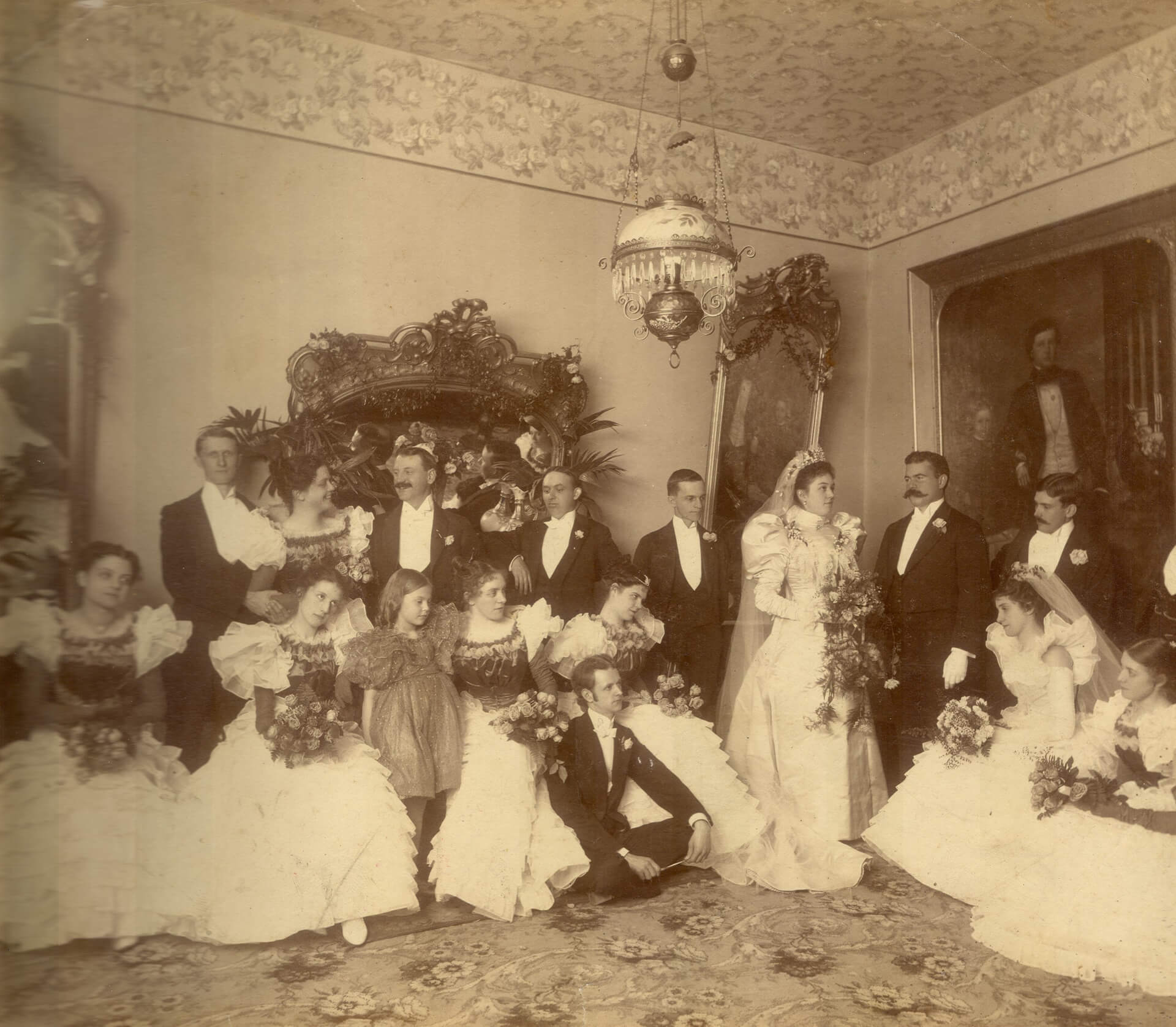
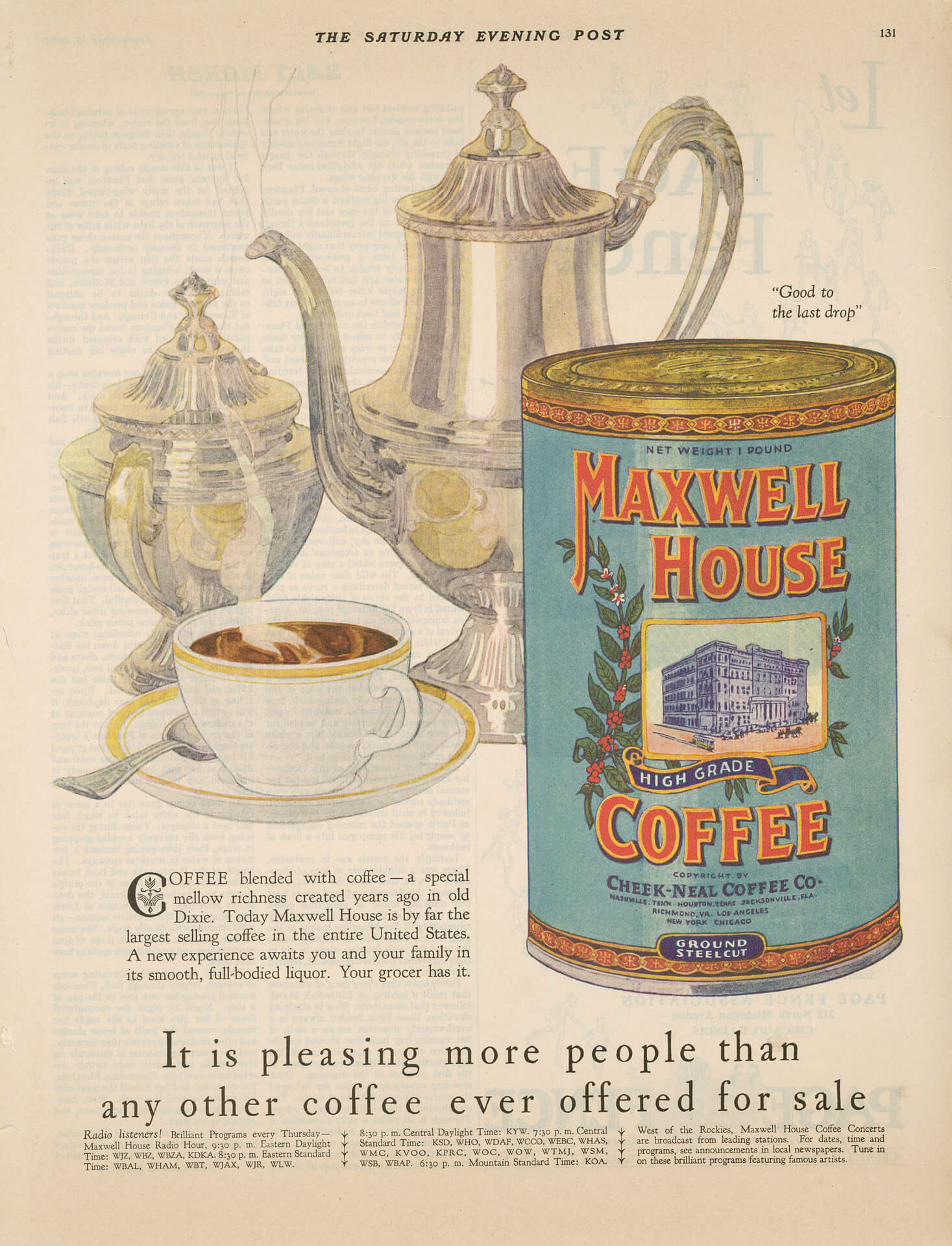

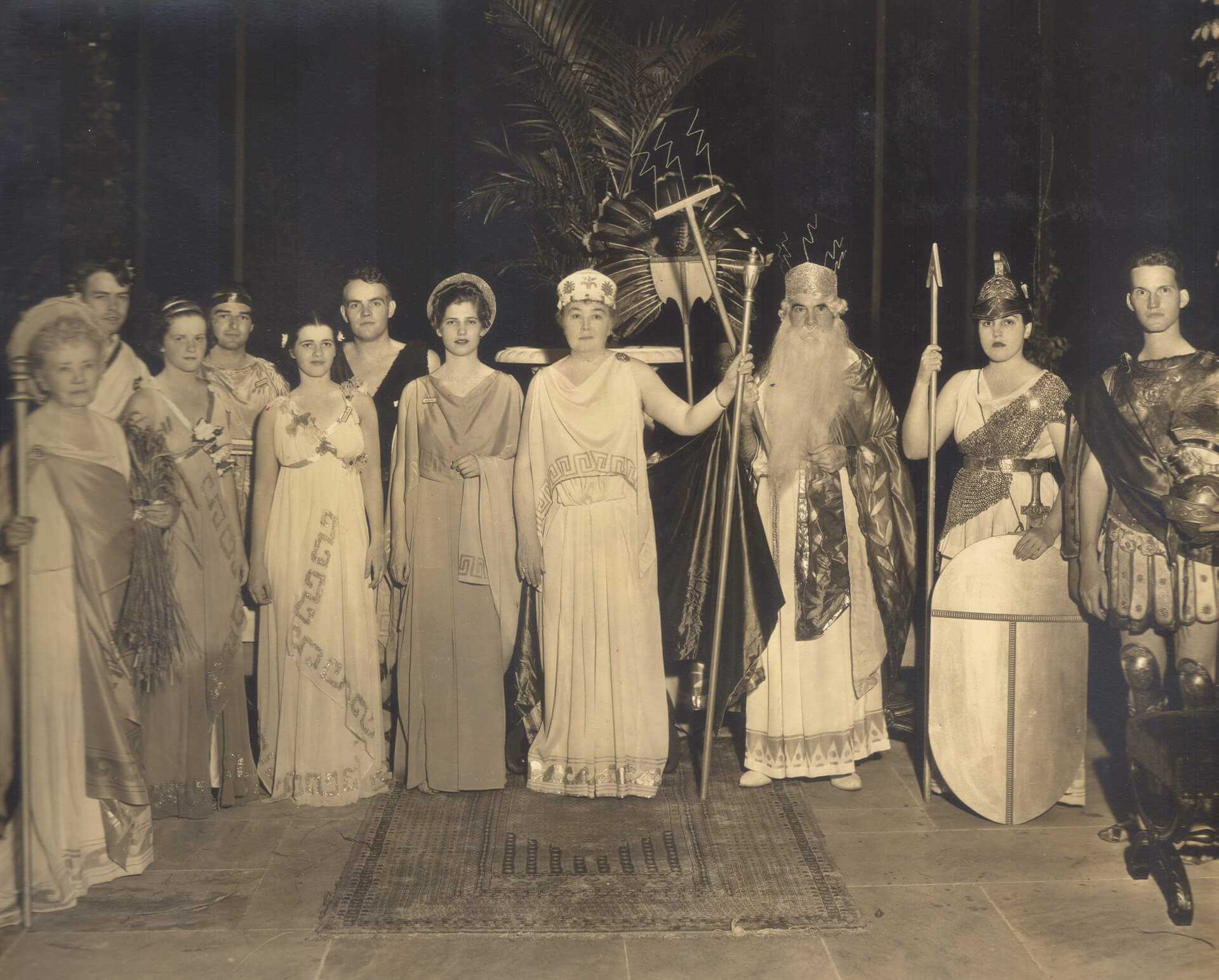
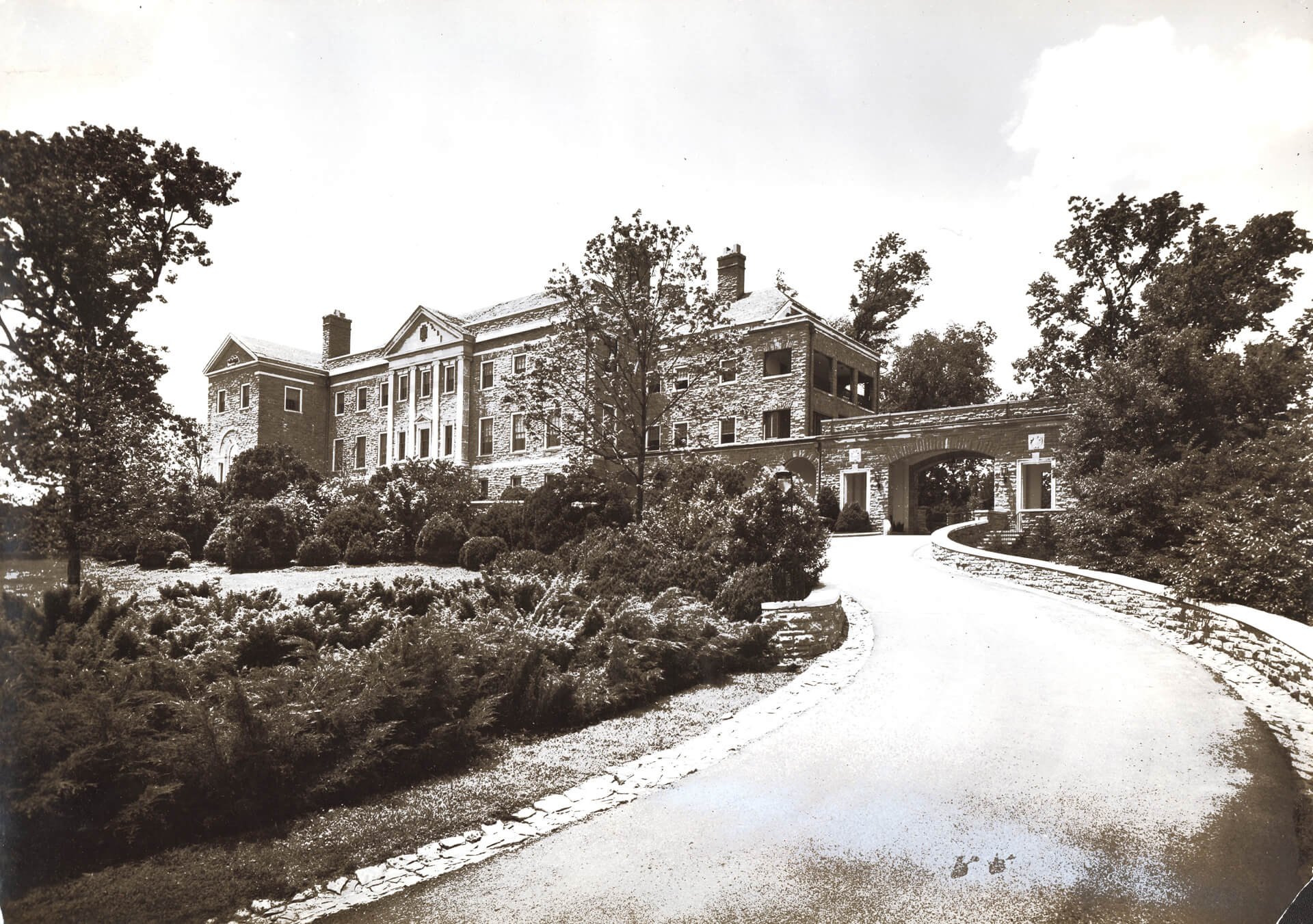
During the 1930s and early 40s, while operating as a private home, Cheekwood and the Cheek family relied on paid staff to manage the estate. The Cheeks are known to have employed both full-time and seasonal staff throughout their residency at Cheekwood. The domestic staff included a butler, valet, housekeepers, a cook, and maids. The grounds were overseen by a head gardener and multiple grounds keepers along with stable hands.
The house and outbuildings at Cheekwood were built to accommodate staff as well as the family. The Gatehouse at the front of the property was originally used to house the head gardener and their family. The upper level of the Stable also contained bedrooms and bathrooms for the stable hands and other staff. The house contained staff spaces on each floor. The ground floor had a service entrance, single-car garage, mechanical room, two laundry rooms, and both the valet’s and butler’s offices. The first floor housed the kitchen, butler’s pantry, and vault. The second floor contained bedrooms and bathrooms for staff and a sewing room. A single staircase connected these staff areas but was removed in the 1990s. Staff spaces in each building now function as offices and, in some cases, as galleries.
Unfortunately, few records of the individuals that worked at Cheekwood remain. Some individuals, however, are known:
Johnnie Winstead [Image 1 – Johnnie Winstead with her sister Bessie] was the first head cook at Cheekwood. Later in her life, Johnnie fondly recounted accompanying Mabel on day trips locating boxwoods for Leslie, Sr., who would return to the location to bargain for the boxwood to add to Cheekwood’s collection.
Jim Smith [Image 2 – Jim Smith with Sappho’s Puppies] was the main stable hand at Cheekwood and was charged with taking care of the family’s horses, mules, and cocker spaniels. In a letter from Mabel to Huldah in 1935, Mabel mentions Jim’s immense pride in the “fine coon dogs,” Sappho and Hero. In 1933 Jim married Maizie, presumably another staff member at Cheekwood. In a letter to Huldah in 1933 Mabel writes “There will be a wedding in our family this week. Jim Smith and Maizie have at last decided to join forces and will occupy the little house by the side gate.”
John Bramlett [Image 3 – John Bramlett with President Roosevelt] was Cheekwood’s chauffeur. One of his most notable drives was chauffeuring President Franklin D. Roosevelt in one of the Cheeks’ cars during Roosevelt’s 1936 trip to Nashville. John was quoted in The Tennessean on June 7th, 1936, to have been “the happiest man alive” when discussing his assignment to drive the President.
David Suggs was the butler at Cheekwood for most of the 1930s. In letters from Mabel to Huldah, Mabel writes of David helping her care for Leslie, Sr. in 1934 after a hospital stay. After Leslie died in 1935, David was given Leslie’s “most personal belongings such as a pipe, striped lounging robe, and slippers.”
Malcolm Jackson [Image 4 – Malcolm Jackson] was hired as head gardener in 1934. In a letter to one of his sons near the end of his life, Malcolm recalled his many responsibilities at Cheekwood such as electrical, plumbing, and mechanical work. He also supervised a team of six men and a night watchman to care for Cheekwood’s expansive landscape.
